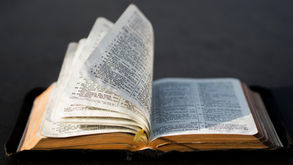The Story of the North American Baha'i House of Worship
- Uplifting Words

- Jul 26, 2019
- 6 min read
Updated: Apr 12, 2020
A short history on the construction of the Baha'i House of Worship in Chicago, USA.

In 1903, learning about the initiative in ‘Ishqábád, a group of Bahá’ís in the Chicago area petitioned ‘Abdu’l-Bahá for permission to build a Mashriqu’l-Adhkár and received warm encouragement to undertake the project. However, the American matrix generated very different dynamics. As one author puts it:
"Although there had grown a substantial Bahá’í community in Chicago and although these Bahá’ís did in 1903 decide to build a House of Worship in emulation of the Ashkhabad House of Worship, there was not the same unity and community spirit nor the resources to equal the Ashkhabad achievements."

While there was no external opposition to contend with, a number of geographic and cultural factors served as impediments. First, in contrast to the community in ‘Ishqábád, the North American Bahá’í community was composed of recent converts whose access to Bahá’í scripture was limited and whose new faith was tested by the falling away of the first teacher in North America. Second, the Bahá’ís lived in comparatively small and widely scattered centers throughout the continent—some 150 cities by 1906, but the communities were mostly modest in size and were spread throughout eleven states as well as the city of Montreal, in Canada. A third challenge to their unity arose from their culture’s prizing of individualism above collective endeavor, and a fourth came from gender inequality.
While the idea of building a Temple generated enthusiasm among many when it was first raised by the Bahá’í community in Chicago, there was also some confusion. What would be its scope? Some saw it as a local Mashriqu’l-Adhkár similar to the one they had read about in ‘Ishqábád, and a number of other communities immediately proposed building one of their own. However, ‘Abdu’l-Bahá swiftly guided them to think of the Chicago House of Worship not only as a national but as a continental effort that should be supported by Bahá’í communities throughout North America and around the world, especially those in Iran.
Establishing a climate of unity was hard work. Some objected to providing funds for a House of Worship in a distant location. Others resisted the call to support the Temple project because a woman, Corinne True, was initially one of the strongest forces behind it after being assigned the task by ‘Abdu’l-Bahá. Difficulties arose in reaching agreement about the site and the Temple design. Eventually, however, a parcel of land in Wilmette, north of Chicago, was agreed upon, and the cornerstone was laid by ‘Abdu’l-Bahá in 1912 during His visit to North America—a moment of great joy and triumph for the community. Nevertheless, decades of fundraising followed, and other challenges had to be surmounted before the project’s completion.
Its efforts to overcome these difficulties shaped the North American Bahá’í community. The construction of the Temple was, in the words of the Universal House of Justice, a "complex project" that took decades to complete, through "two world wars and a widespread economic depression" with each stage in its development … intimately tied to the expansion of the community and the unfoldment of its administration. Throughout this process, the loving and infallible guidance of ‘Abdu’l-Bahá and Shoghi Effendi served as a catalyst for the community’s development by repeatedly raising its vision above the merely material. Shoghi Effendi stressed that:
It is devotion, sincerity and genuine enthusiasm which in the long run can ensure the completion of our beloved Temple. Material considerations, though essential, are not the most vital by any means.
Ultimately, the tests of unity were overcome; institutions were established, matured, and learned how to function more and more effectively as they built both the Temple and a vibrant national community. As one writer has noted:
"The real strength of the early American believers, men and women, was not that they were like-minded individuals who formed a harmonious, homogeneous community, but that despite their strong individualism they allowed the teachings of Bahá’u’lláh and the guidance of ‘Abdu’l-Bahá to serve as beacons, as sources of inspiration and understanding, as they struggled to build a community that drew its unity from its diversity."
This is a key achievement of the North American Bahá’ís through their temple-building project.

Time and again, the Guardian, Shoghi Effendi, told the Bahá’ís of North America that no other House of Worship would ever possess
"the vast, the immeasurable potentialities with which this Mother Temple of the West, established in the very heart of so enviable a continent, and whose foundation stone has been laid by the hand of the Center of the Covenant Himself, has been endowed."
Two of these immeasurable potentialities, the expansion of the community and the unfoldment of its administration, bear a closer look. Unlike ‘Ishqábád, there were no external conditions to limit the growth of the Bahá’í community in the United States, and both ‘Abdu’l-Bahá and Shoghi Effendi linked the temple-building process to the expansion of the Faith. Accordingly, both potentialities were developed conjointly. By 1944, for example, acting on the guidance of the Guardian, the North American community had completed the exterior of the House of Worship and established Bahá’í communities in every state of the United States and every province of Canada. Furthermore, the number of nine-member local Bahá’í councils, called Local Spiritual Assemblies, had doubled on the continent in a period of seven years, and Bahá’í communities were taking root in Central and South America—many supported by Bahá’í pioneers who moved there from North America.
In a letter dated 28 March 1943, the Guardian described the role the House of Worship in North America was
"destined to play in hastening the emergence of the World Order of Bahá’u’lláh."
Advancement towards this goal is evident from the early years, in the gradual transfer of responsibility for the Temple project from an individual to a collective level. While ‘Abdu’l-Bahá had tasked Corinne True to spearhead the project when she had gone on pilgrimage in 1907, by 1920 He widened the scope of responsibility, counselling that all the affairs related to the Mashriqu’l-Adhkár are to be referred to the annual Convention and that "Whatever the Convention, with a majority of opinions, decides, must be accepted and executed." Another step towards realizing this vision of the North American Bahá’í community’s role in hastening the emergence of the World Order of Bahá’u’lláh was the establishment and development of the institution of the Hazíratu’l-Quds (literally, sacred fold) in concert with the House of Worship. Its purpose was to accommodate the community’s administrative work, serving as the seat of the Bahá’í National Assembly and pivot of all Bahá’í administrative activity in future. Facilities for communal well-being such as those in ‘Ishqábád were not inaugurated until the construction was completed, when Shoghi Effendi called for the erection of the first dependency of the first Mashriqu’l-Adhkár of the western world.
Looking at these first two Bahá’í Houses of Worship in ‘Ishqábád and Chicago allows us to see how differences in context and focus can affect the emergence of this institution and allow for emphasis to be given to one or another aspect, as appropriate to its matrix. In ‘Ishqábád, the Temple arose within the context of a very strong, active and united local community, and dependencies followed an organic course of development since public services, such as those related to the education of both boys and girls, for example, were not available. In Chicago, on the other hand, the Temple served as the catalyst for building unity of vision and purpose in the Bahá’í community of the entire continent of North America, developing its capacities to raise funds, to use the consultative process to achieve unity of thought and action regarding the design, to grow the community of believers attracted to the teachings of Bahá’u’lláh, and to develop administrative structures to guide and channel the energies of the community. Since public education and other services were widely available, Chicago did not devote energy to developing such dependencies; rather, under the guidance of Shoghi Effendi, it focused on building crucial administrative capacities that eventually affected the development and functioning of national and local Bahá’í communities throughout the entire hemisphere. In a sense, one could view the ‘Ishqábád Temple as a model for the emergence of a local House of Worship and the one in Chicago as a model for the continental Houses of Worship that were established during the stage of temple building upon which the Bahá’í world community next embarked.
Excerpt from "For the Betterment of the World, to the Glory of God" By Ann Boyles. Read the full article here >























